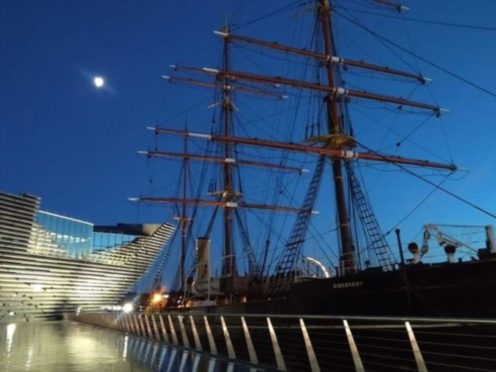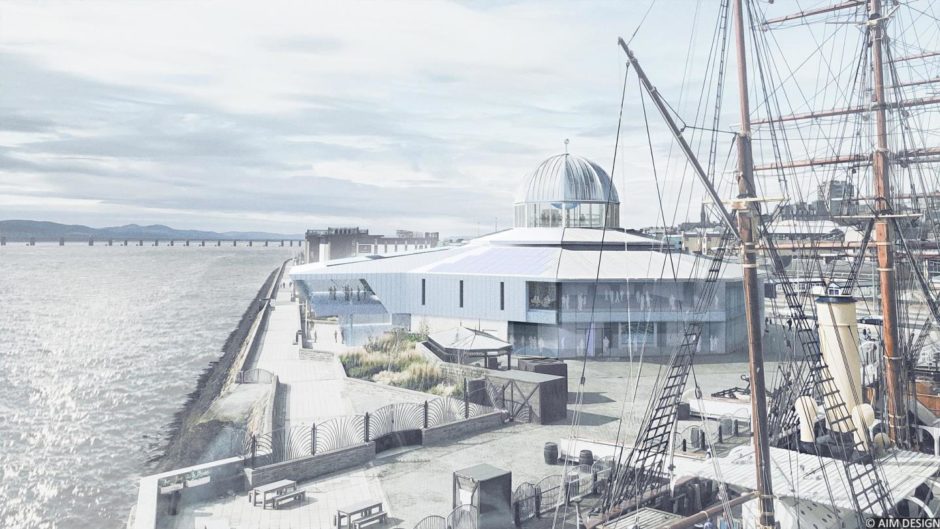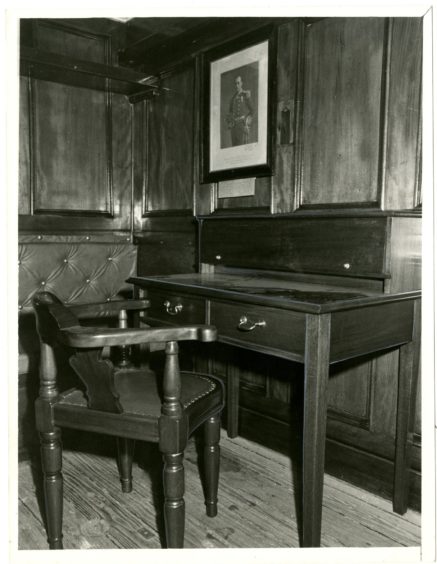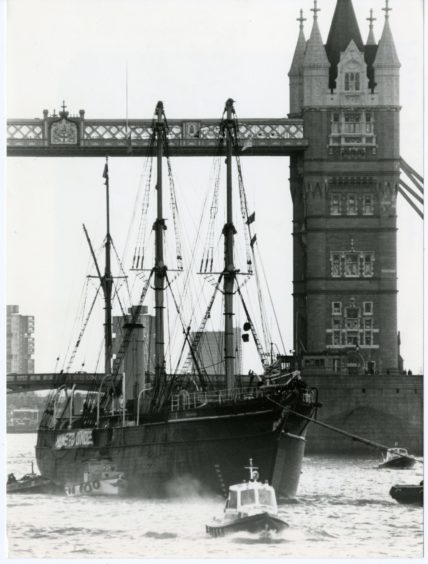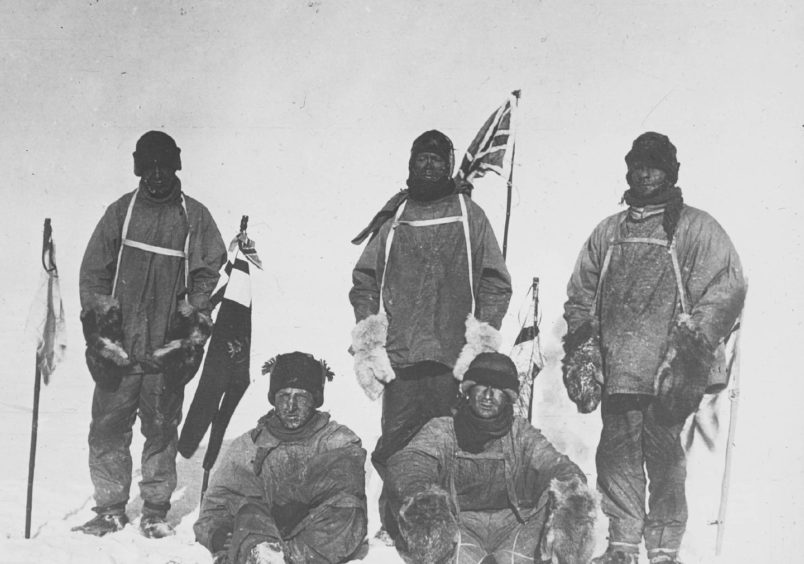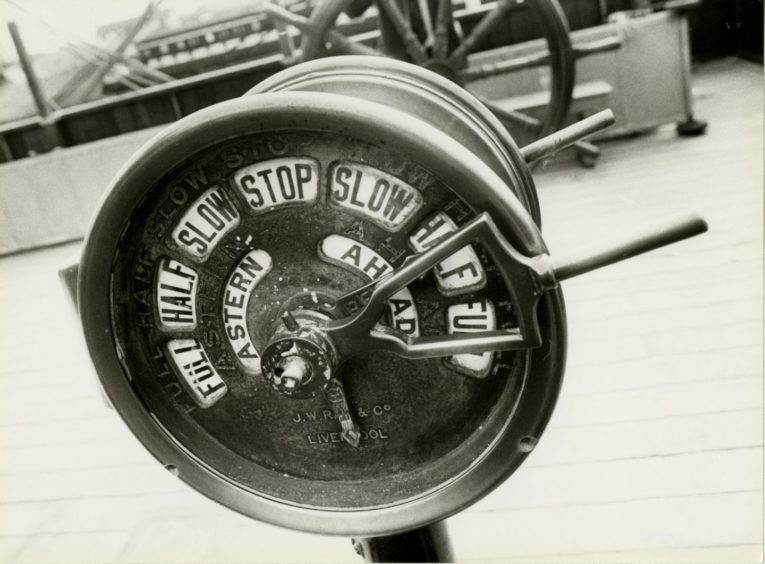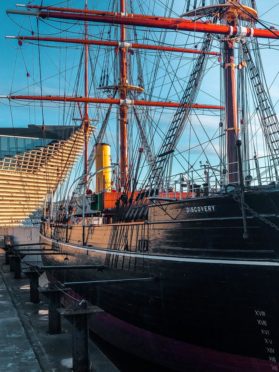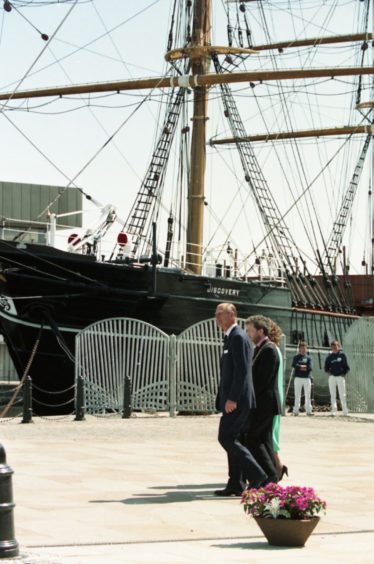It’s one of the most famous names from an age when explorers pushed themselves to the limit in ice-encrusted regions of the world.
RRS Discovery, the ship which is synonymous with pioneering, trailblazing characters such as Robert Falcon Scott and Ernest Shackleton, is as well known in the chronicles of polar expeditions as Apollo and Soyuz are in space travel.
The vessel, which was constructed more than 120 years ago, is already a popular attraction at Dundee’s Discovery Point and the latter amenity will be completely transformed after securing substantial financial backing of £12 million from the Scottish Government and the National Lottery Heritage Fund.
A new permanent gallery will put the focus on exploration, including the infamous ‘Race to the Pole’ which dominated Captain Scott’s ill-fated second journey to the Antarctic, and the amazing and inspiring story of Sir Ernest Shackleton, who sailed first to the Antarctic on board Discovery in 1901.
These are stories which had very different endings – Scott and his comrades perished, whereas Shackleton survived – but this ambitious new project will be used to emphasise the scientific imperative of tackling climate change.
And RRS Discovery will be at the centre of activities, just as it was at the start of the 20th century.
Pride of Dundee
At that stage, there was increasing pressure among the public and scientists alike for an expedition to the southern polar region.
And while the British government and the Admiralty stopped short of organising the trek themselves, they agreed to partially fund a venture led by the two main interested scientific organisations, the Royal Geographical Society and the Royal Society.
RRS Discovery was built by the Dundee Shipbuilders Company, which primarily made smaller vessels such as trawlers, tugboats and steam yachts.
The total cost was £51,000, equivalent to £4m in today’s currency.
Much of the detailed work of fitting out the ship’s interior spaces, scientific equipment and provisions was overseen directly by Scott and the ship’s engineer Reginald Skelton.
Discovery was fitted with a 450-horsepower coal-fired triple expansion steam engine, but had to rely primarily on sail because the coal bunkers did not have sufficient capacity to take the ship on long voyages.
But, despite that issue, she was regarded as being at the cutting edge of modern technology.
There were jubilant scenes when the vessel was launched into the Firth of Tay on March 21 1901 by Lady Markham, the wife of Sir Clements Markham, the RGS president, in front of thousands of proud and passionate Dundonians.
There was no standing on ceremony thereafter as the excitement mounted.
The British National Antarctic Expedition departed the UK less than five months after the Discovery was unveiled and only a week after the ship had left Dundee.
A harrowing journey
Soon enough, she was on her way to the very ends of the earth.
Experience of Antarctic or Arctic waters was almost entirely lacking among the 50-strong party and there was very little special training in equipment or techniques.
During an early attempt at ice travel, a blizzard trapped expedition members in their tent and their decision to leave it resulted in the death of George Vince, who slipped over a precipice on 11 March 1902.
However, the mission had both scientific and exploration objectives; the latter included a long journey south, in the direction of the South Pole.
This gruelling trek, which undertaken by Scott, Ernest Shackleton and Edward Wilson, took them to a latitude of 82°17′S – about 530 miles from the pole.
A harrowing return journey brought about Shackleton’s physical collapse and his early departure from the expedition, but the positive results included important biological, zoological and geological findings and the British public lapped up the news coverage.
RRS Discovery was pivotal to these breakthroughs and the British National Antarctic Expedition was acclaimed upon its return to Britain.
However, it had incurred massive costs and, in 1905, the vessel was sold to the Hudson’s Bay Company for £10,000 – a fifth of her original build cost – which used her as a cargo vessel between London and Hudson Bay in Canada.
The HBC heavily remodelled the ship for her new purpose, stripping all the accommodation and other rooms below her weather deck to maximise cargo space.
Features such as her lifting propeller, dredging winches and her original galley stove were removed and sold. The ship’s officers were accommodated in the deckhouses which had housed the ship’s laboratories and scientific storeroom.
Discovery subsequently made an annual transatlantic trip for the HBC between 1905 and 1911 carrying food, fuel, building materials and gunpowder from London to Charlton Island in Canada.
The ship was laden with the season’s haul of fur hides for the return voyage.
Every round trip took around two months and was carried out in the summer, although the ship often still had to break through ice in the Davis and Hudson Straights.
A national treasure
In 1916, even as the First World War was raging, Discovery was loaned to the British government to rescue Shackleton’s party, who were marooned on Elephant Island.
The ship was refitted in Plymouth and departed on August 11.
But, just four weeks after leaving Blighty, she reached Montevideo, only to learn that Shackleton had effected his crew’s own rescue in the Yelcho while Discovery was on her way.
It was a turning point, but the ship had become a national treasure.
Then, during the Festival of Britain in 1951, which was held at the South Bank just across the river from Discovery’s mooring, the refulgent ship hosted an exhibition on Antarctica and the history of its exploration.
This required opening much of the existing crew quarters as public exhibition space and the former water tanks were removed and replaced with new crew quarters.
It allowed the public the opportunity to step onto a vessel which was laden with history and they flocked to the site in large numbers throughout the summer.
The Royal Navy maintained the ship, but as Discovery passed her 70th birthday – and 40 years moored in the Thames – her condition significantly deteriorated.
She was in danger of being scrapped, but the Maritime Trust, into whose care she passed in 1979, saved her from the breaker’s yard.
Her future secured, she was berthed first on the River Thames next to HMS Chrysanthemum and HMS President, and later in St Katharine Docks.
The vessel reverted to the Royal Research Ship designation and was opened to the public as a museum, but there was a sense of something valuable coming home when she was passed into the ownership of the Dundee Heritage Trust in 1985.
In March 1986, Discovery left London aboard the semi-submersible docklift ship Happy Mariner to make her journey home to the Scottish city that had built her.
Installed in a custom-built dock in 1992, the proud ship now stands as the centrepiece of Dundee’s visitor attraction Discovery Point.
And her profile will inevitably increase in the future when the multi-million-pound expansion of the existing facilities there is brought to fruition, hopefully in 2022.
See more like this:
